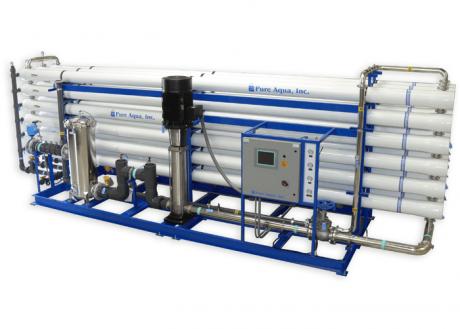WATER PURIFICATION
[Hebrew 10:22]
and our bodies washed with pure water.
Water purification is the process of removing undesirable
chemicals, biological contaminants, suspended solids and gases from
contaminated water. The goal is to produce water fit for a specific
purpose. Most water is purified for human consumption (drinking water),
but water purification may also be designed for a variety of other
purposes, including meeting the requirements of medical,
pharmacological, chemical and industrial applications. In general the
methods used include physical processes such as filtration, sedimentation, and distillation, biological processes such as slow sand filters or biologically active carbon, chemical processes such as flocculation and chlorination and the use of electromagnetic radiation such as ultraviolet light.
The purification process of water may reduce the concentration of particulate matter including suspended particles, parasites, bacteria, algae, viruses, fungi; and a range of dissolved and particulate material derived from the surfaces that water may have made contact with after falling as rain.
The standards for drinking water quality are typically set by governments or by international standards. These standards will typically set minimum and maximum concentrations of contaminants for the use that is to be made of the water.
It is not possible to tell whether water is of an appropriate quality by visual examination. Simple procedures such as boiling or the use of a household activated carbon filter are not sufficient for treating all the possible contaminants that may be present in water from an unknown source. Even natural spring water – considered safe for all practical purposes in the 19th century – must now be tested before determining what kind of treatment, if any, is needed. Chemical and microbiological analysis, while expensive, are the only way to obtain the information necessary for deciding on the appropriate method of purification.
Reverse osmosis, it
is first necessary to understand osmosis. Osmosis is the term for the phenomenon
whereby if a semi-permeable membrane separates two salt solutions of different
concentration, water will migrate from the weaker solution through the membrane
to the stronger solution, until the solutions are of the same salt
concentration. Reverse osmosis subverts this process. It involves applying
pressure to reverse the natural flow of water, forcing the water to move from
the more concentrated solution to the weaker. The semi-permeable membrane is
porous, allowing water to pass through, but blocking the passage of the bulkier
salt molecules.The semi-permeable membranes for reverse osmosis treatment are generally
constructed from polyamide-based materials. These materials are resistant to
biological degradations, but are subject to chemical attacks from chlorine.
Reverse osmosis has been used as a method of purification for ground and surface fresh water, in addition to its role as a desalinating agent. Working with such water sources creates some problems for the reverse osmosis system. Because of the very small pore sizes involved in the membrane, it is vital that ground and surface water is adequately pre-treated prior to the reverse osmosis process. Depending upon the hardness of the water involved, scaling of the membrane is likely to occur. If the concentration of the calcium or magnesium in the water (the chemicals that determine water’s hardness) is at a high enough level where the chemicals are insoluble, it will create a hard mineral on the inside of the membrane, rendering it useless.



Comments
Post a Comment